Google has announced new Google Analytics features that users will start seeing as early as this week. Many of the updates will improve reporting and customization options, but the new ‘Intelligence’ reports is a unique feature as it is Google’s initial phase in bringing an algorithmic driven intelligence engine. Will many of the features will be available this week, some of the features will have a phased roll-out to all users over the next few weeks. Let’s take a quick look at the different features.
Expanded Goals & Site Engagement Goals
If you’ve got a website, then you can probably think of more than four things you’d like your visitors to be doing, and until now, Google Analytics has limited the number of configurable goals per profile to just four. Sure, you can create 50 profiles and thus track up to 200 goals, but having to switch back and forth in your reports can be a bit cumbersome. Well, here’s some very welcome news:
Comprehensive site performance measurement just got easier. A newly released feature in Google Analytics now lets you create up to 20 conversion goals per profile, including new threshold goals!
Each profile now can be configured with up to four “Goal Sets”, each capable of housing five individual goals. In your Traffic Sources reports, each goal set appears as its own tab (see screen shot below) and the goals associated with the set are listed out in plain text, just as before, to show you how your visitors are accomplishing the objectives of your site.
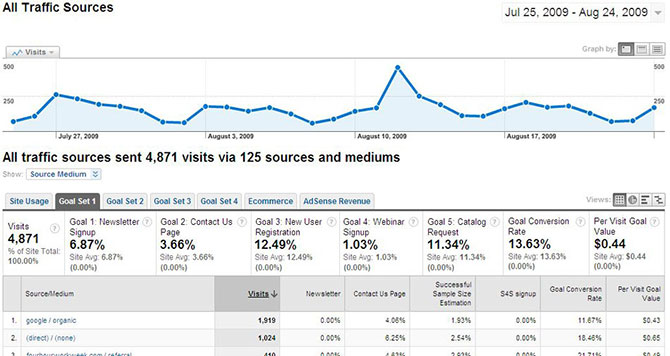
Goal configuration has a new look which follows the goal set organization. For each goal set, you can add up to five individual goals (the remaining number of goals in each set are conveniently noted for you). To add a new goal, just click on the “Add goal” link for the goal set you wish to add a goal to.
With all of these new goals to configure, it’s a good practice to use your goal sets to group your goals strategically. For example, you might use Goal Set 1 to track a set of e-commerce related goals such as Successful Purchase, Added Item to Shopping Cart, Deleted Item from Shopping Cart, and things of that nature. For your next set, you might want to track interaction goals such as Newsletter Signup, Followed us on Twitter, Logged In, etc… The sky’s the limit, but make sure to consider how you’ll want to use your reports when configuring your new goals.
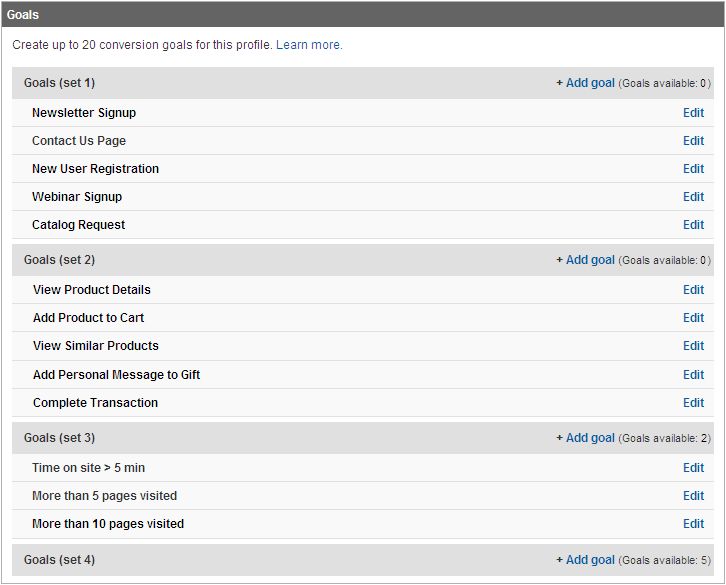
Another change you’ll notice is the addition of two new goal types: Time on Site and Pages/Visit. Previously goals could only be counted when a particular page URL was visited, but threshold goals will allow a conversion to be recorded for engagement metrics as well. Have an ad-serving site and want to record a conversion when someone as seen 10 pages? Now you can. Serving up audio/ video or longer content pieces and want get an idea of how long people are listening, viewing or reading? Thresholds can help!
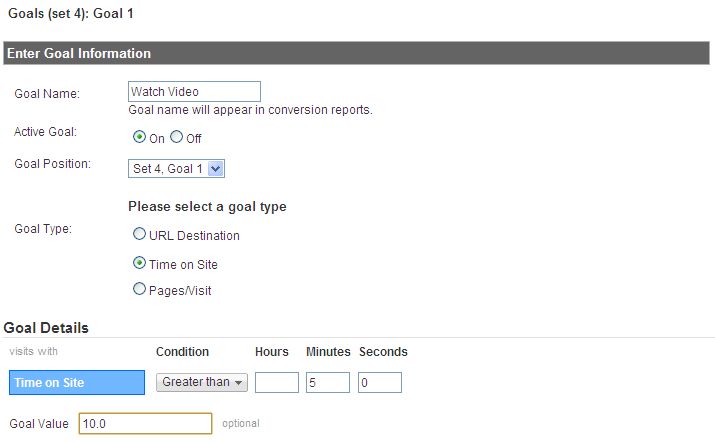
Expanded Mobile Reporting
Google Analytics can now provide tracking for mobile applications build for iPhone and Android devices. With over 40 million iPhone users and almost 18 Android devices by year’s end, measure user engagement across mobile applications is becoming increasingly important.
In addition, Google Analytics will now be able to track traffic to mobile sites from all web-enabled mobile devices, regardless of whether JavaScript is enabled or not. By using a clever snippet of server side code (Available in PHP, Perl, JSP and ASPX), Google Analytics will provide expanded reporting on mobile devices and carriers.
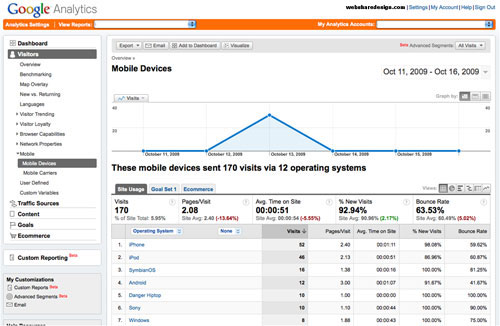
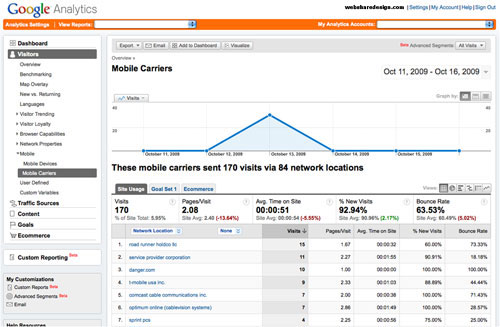
Advanced Analysis Features (including Advanced Table Filtering)
Google Analytics is offering a variety of advanced reporting features that will slightly take the load off of our spreadsheet programs. Secondary Dimensions will allow you to view multiple levels and combinations of data in a single view without having to drill down to each level. The Pivoting feature will let you cross-tabulate two difference metrics with two different dimensions. Finally, Advanced Table Filtering will enable you to filter the rows in a table based on different metric conditions and combinations.
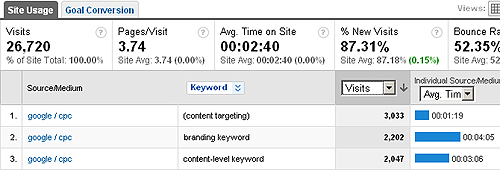
Unique Visitors as a new metric in Custom Reports
Now when you create a Custom Report, you can select ‘Unique Visitors’ as a metric against any dimension in Google Analytics! This new metric will allow marketers to see how many actual visitors make up any user-defined segment of your Custom Report. An actual visitor is defined as a unique cookie.
Multiple Custom Variables
Over the next few months, Google will be releasing Multiple Custom Variables (MCV), giving power-users the flexibility to customize Google Analytics tracking and collect the unique site data most important to their business. With this feature, users can classify any number of interactions on the site into trackable segments. Multiple custom user segments can now be collected at the page, session and visitor-level concurrently.
For example, you can now define and track visitors according to:
* Visitor attributes (e.g. member vs. non-member)
* Session attributes (e.g. logged-in or not)
* Page-level attributes (e.g. viewed Sports section)
NOTE: The initial rollout (Phase 1) of this feature does not include segment creation based on MCV and there is an initial limit of five simultaneous variables per page.
Syntax:
_setCustomVar(index, name, value, opt_scope)
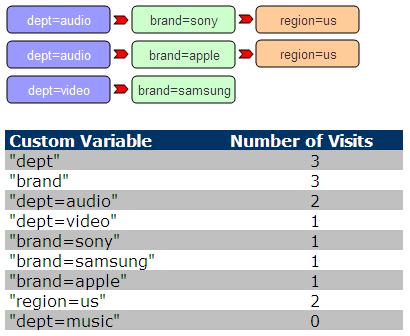
Share Segments and Custom Report Templates
In addition to the ability to create Custom Reports and Advanced Segments, you now have greater control over administering and sharing your customizations. Simply share the URL link for a custom report to anyone who has an Analytics account and a pre-formatted template will automatically be imported into their account. You can also select which profiles you want to share or hide your Advanced Segments and Custom Reports with.
Analytics Intelligence
New “Intelligence” reports provide automatic alerts of significant changes in the data patterns of your site metrics and dimensions over daily, weekly and monthly periods. It is a part of the initial release of an algorithmic driven intelligence engine. If your website experienced a 300% increase in referral traffic from Digg on a single day, Google Analytics will now automatically alert you of this event, without needing to mine through the data yourself to find that out. The Intelligence reports will already be configured with predefined alerts.
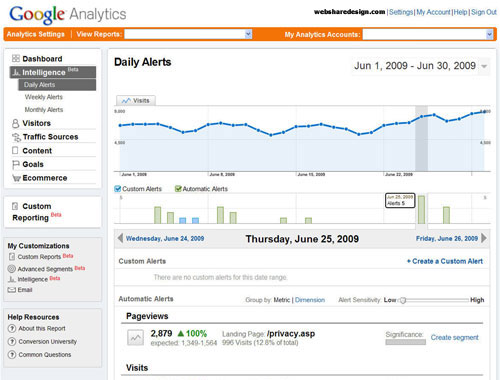
Custom Alerts
Customers can create custom alerts to tell Google Analytics what to watch out for. They can set daily, weekly, and monthly triggers on different dimensions and metrics, and be notified by email or in the user interface when the changes occur. There will be 11 dimensions and 18 metrics to choose from when configuring a custom alert.
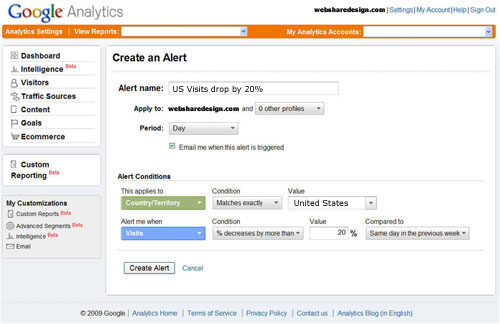
Stay tuned to the blog as we provide an in-depth analysis of each of the new features and how you can better leverage these tools to gain more insight to user activity on your website.
















